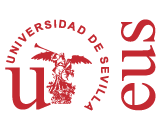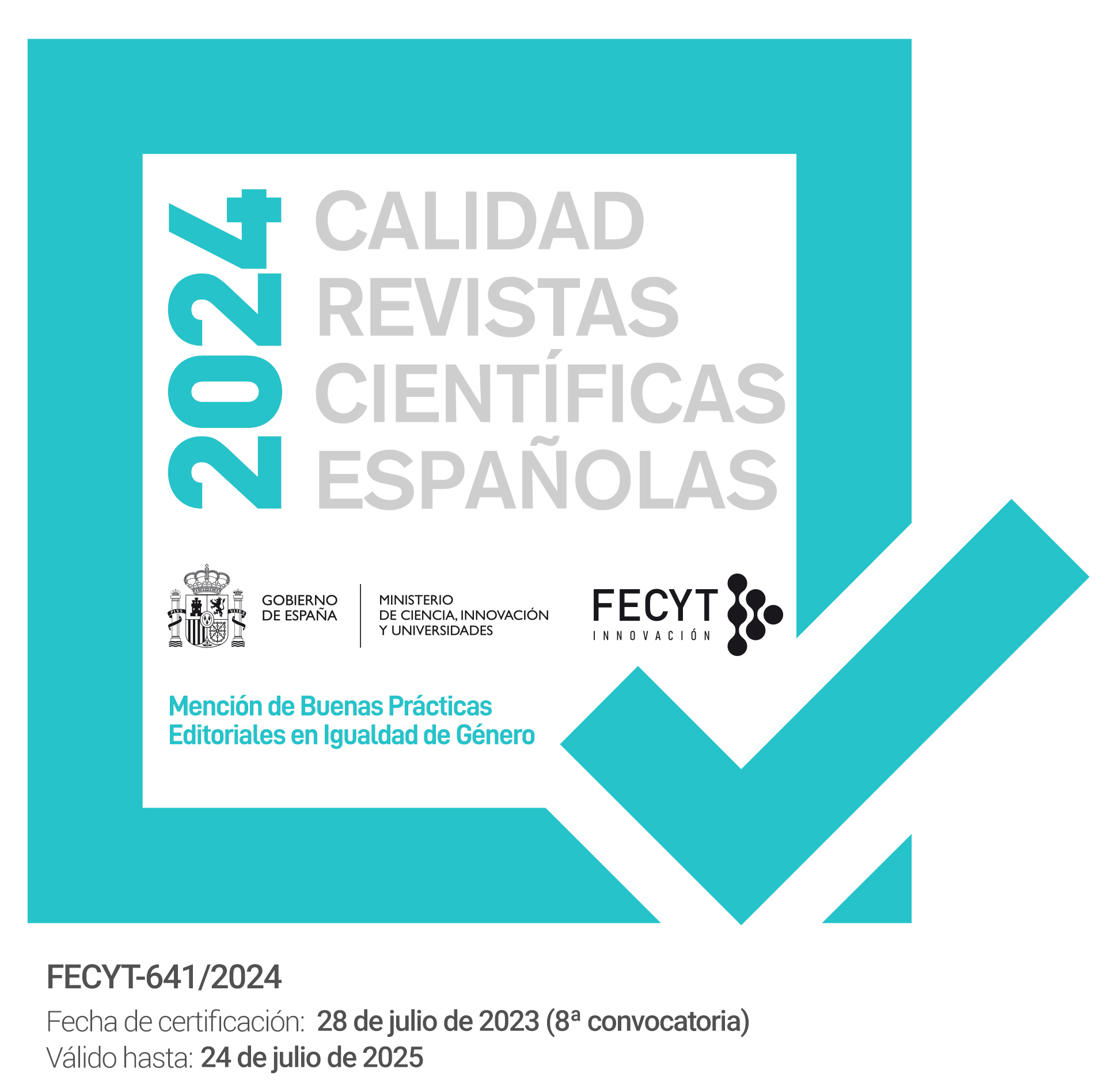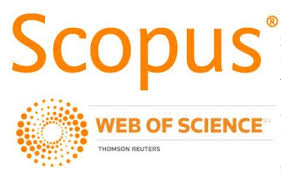ISSN: 1132-0265
e-ISSN: 2253-8321
DOI: http://dx.doi.org/10.12795/PH
Reviewers instructions
Review process
Submission to reviewers
Editors will email the title and abstract of the assigned article to the selected reviewers via OJS, as well as an invitation to register on the journal’s website to complete the review. They must also log in to accept the review assignment, download the submission, make comments and select a recommendation.
Deadline for review
The usual time frame for reviewing is 4 weeks.
Note: It can be changed during the editing process.
Reminders to reviewers
Although the editor can contact the reviewer directly, OJS default messages allow automatic reminder emails to be sent to reviewers in the following cases:
- If the reviewer does not respond to a review request within 5 days.
- When there are 5 days left before the review deadline.
Access for reviewers
The email invitation sent to reviewers includes a URL that links the invited reviewers directly to the review page for submission (with access to any other pages where login is required).
Anonymous evaluation
Links to the SECURE ANONYMOUS REVIEW section are provided on the pages where reviewers upload files.
Ensuring anonymous peer review:
To ensure the integrity of a blind peer review for a submission to this journal, appropriate precautions must be taken to protect the identity of authors and reviewers. This means that authors, editors and reviewers (who upload documents as part of their review) must check that their names have been removed from the text, using “Author” and year in the references and footnotes, rather than the authors’ names, article title, etc.
Reviewer User Guide
Below, you will find information on the steps to follow in order to carry out the evaluation process of the works on our platform.
1. Log in to the platform with the instructions received in the invitation email and in the reviewer’s tutorial.
2. Please enter your username and password.
3. Click on “My List”.
4. Click on the title of the submission.
5. On the Review screen:
- Request for review. Displays the main information of the article: the title, abstract, review type, link to the files to review and review schedule. There are three dates indicated. These dates correspond to the following processes: editor’s submission of the request, response accepting or declining participation, and submission of the decision. You will also be asked to consent to the collection and storage of your data pursuant to the policy statement.
- Review Steps
1. Inform the submission editor whether you will accept the review (step 1).
2. If yes, please refer to the Reviewer Guidelines below (step 2).
3. Click on the names of the files related to this submission that you wish to download and review, either on screen or by printing them (step 3).
4. Once you have reviewed the article, fill in the form also found in step 3.
5. You can also upload files that can be consulted by the editor or the author. The reviewer will have access to the text of the article submitted. Using Word’s track changes system or by means of comments in the margin, the reviewer will be able to list any observations, typos, etc. that are deemed appropriate. If the file has been modified or a document with observations has been created, it must be added at the end of step 3; to do so, click on the “Upload file” button in the Upload/Reviewer’s Files section, locate the file you wish to send, click on “Continue” in the next two sections and click on “Complete” in the last one. You do not need to upload a document; this step is optional.
- Ensuring anonymous peer review:
To ensure the integrity of a blind peer review for a submission to this journal, appropriate precautions must be taken to protect the identity of authors and reviewers. This means that authors, editors and reviewers (who upload documents as part of their review) should check that their names have been removed from the text, using “Author” and year in the references and footnotes, rather than the authors’ names, article title, etc.
6. Select a recommendation and submit the review by clicking on “Submit Request” to complete the process. You must complete the form or upload a file before selecting a recommendation.
Criteria for acceptance of papers
1. Originality, novelty and relevance of the research carried out, as well as the relevance of the work in the context of the areas of knowledge or disciplines covered by the journal.
2. Significance of the research for scientific and social progress.
3. Scientific validity of both the sources consulted and the methods used to develop the research.
4. Proper writing, logical organisation and presentation of the manuscript according to the journal’s style guidelines.
5. The structure of research articles (headings) should follow the model detailed below: Introduction, Theory, Methodology, Results, Discussion, Conclusions and Bibliographic References. A combined Results and Discussion, or Discussion and Conclusions section, may also be appropriate.
-
Abstract
A summary written in the language of the article and its corresponding English version (the abstract) must be provided. This summary must be clear and concise and consist of approximately 150 words. It must briefly state the objective, methodology, results and main conclusions. Bibliographical references and unusual abbreviations should be avoided. In any case, bibliographical references should be limited to the author and year of the work, and any necessary abbreviations should be defined upon the first mention—in the abstract itself. The abstract must be presented independently, separate from the text of the article.
-
Structure of the article
Introduction
The introduction must include an outline of the topic, the state of affairs (which must not include a detailed review of the bibliography), the objectives of the work and a justification of the importance of the contribution of this work to scientific knowledge, without it being a summary of the results.
Theory or Theoretical Background
A Theory section must develop, not repeat, the scientific background to the research that has already been covered in the Introduction and lay the groundwork for the research work being presented.
-
Methodology
This section must provide details of the methodology used (sources, data, methods, techniques, procedure). The entire research process must be presented in order to allow the work to be reproduced by another researcher. Any methods used which have already been published must be referenced with a citation. The methodology used must reflect how it helps to solve the problems presented in the main questions, hypotheses or propositions.
-
Results
The results must be clear and concise. Tables, charts, maps and diagrams that facilitate the analysis and interpretation of the results may be used.
-
Discussion
This section must include an explanation of the significance of the results of the work and compare and contrast them with the existing literature (by means of bibliographic citations), as this section and/or the conclusions must highlight the contributions of your work to the scientific literature. Therefore, the results already presented in the previous section—Results—should not be repeated here. It is also recommended to avoid the use of long quotations and discussion of published literature.
In this section, recommendations or implications based on the results may be included, limitations of the research may be presented and discussed, and new lines of work may be suggested.
-
Conclusions
Conclusions should not be a summary of the work; rather, they must establish whether the hypotheses/propositions/main questions have been verified with the objectives and results obtained, highlighting, if not already done, the contributions of the research. It is important to justify the interest and novelty of the work for the subject analysed or the scientific discipline from which it has been approached.
The conclusions of the paper may be presented independently in this section or as part of a Discussion and Conclusions section.
-
Funding
Financial support received from research or administrative institutions (grants, research projects, EU projects, etc.) should be mentioned, where appropriate, in a note on the first page.
-
Acknowledgements
Similarly, any support received (administrative, technical, etc.) that is not highlighted in the funding section can also be acknowledged in this section, where appropriate.
-
Annexes
Optional section that may contain tables and complementary information to the text, or other important elements to better understand the research presented. Information in the annexes must be cited where appropriate in the text.
The Review Form (to be completed online) contains the following items
Give the assessment (1 to 5) that you consider appropriate regarding the following aspects:
ADAPTATION TO THE EDITORIAL LINE
The content of the work falls within the journal’s editorial line.
RELEVANCE OF THE SUBJECT
From a scientific point of view, it is a significant contribution.
The approach is up to date and responds to current research demands.
It is original and presents relevant findings in context.
METHODOLOGICAL RELIABILITY AND ORGANISATION OF CONTENT
Each and every phase of the methodological process is properly explained.
The method of analysis is in line with the conclusions obtained.
Sufficient data are provided for possible replication of the work and further synthesis.
The bibliography is complete, updated and adapted to the subject.
The article shows a clear and precise mastery of the area of work, the contents covered and the metalanguage used.
The methodology used in the work is consistent with the type of research proposed and has been rigorously applied.
There is a clear definition of objectives and method of presentation, followed consistently in the development of the text.
The titles of sections and sub-sections are appropriate (they identify clearly differentiated parts of the article and are consistent with the paragraphs they introduce).
The summary is clear and appropriate in relation to the text.
FORMAL ASPECTS
The wording is clear, short and precise.
The style used is consistent with scientific work.
Notes, references and quotations meet the requirements of a scientific study.
Comments on the above points, if appropriate







